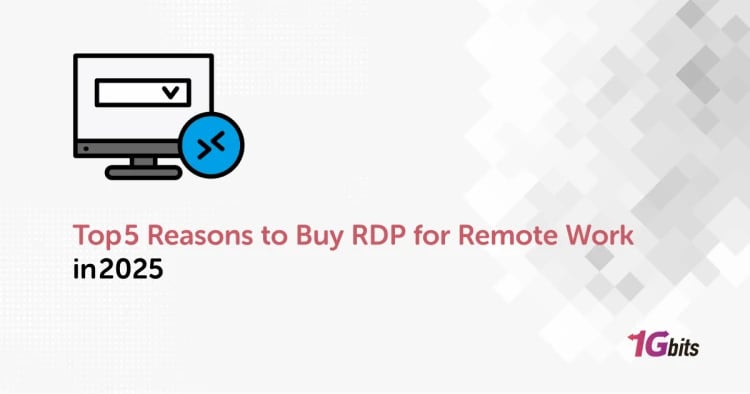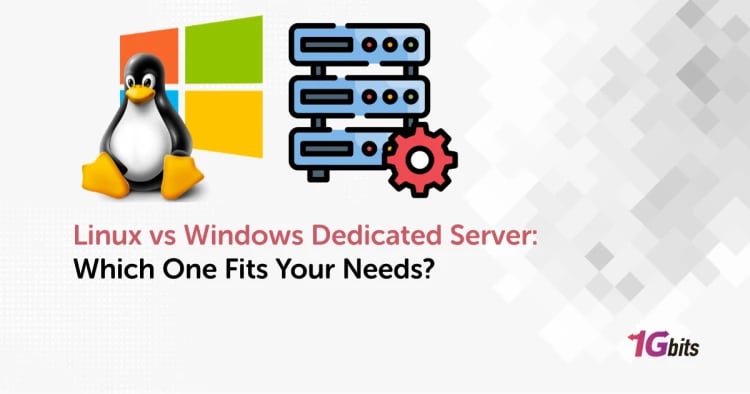Though the popularity and fame of Apple and Microsoft are unmatched among common users, programmers and developers always prefer Linux. Linux has never lost its relevance in terms of accomplishing coding and programming tasks. When it comes to Linux, Linux distributions are bound to come to your mind before anything else.
Linux distributions, formerly known as Linux distros, are widely acknowledged by professional coders. However, you may not know every detail of Linux distros if you have just stepped into the world of programming. If you’re keen on knowing everything associated with Linux distros, this article is for you. Finish the article sincerely to gain complete knowledge of Linux distributions.
If you're interested in exploring practical applications of Linux distributions, such as setting up a Linux streaming server, check out our detailed guide on how to create a Linux streaming server. It’s a great way to expand your understanding of Linux's versatility.
A brief introduction to Linux distributions
Have you been a Windows or Mac user who just moved to Linux? Well, you may need some time to get habituated with the functions of Linux. Firstly, you need to understand that Linux doesn’t come as a complete package like Windows or macOS. Collaborations of uncountable servers and segments keep Linux working.
Most importantly, Linux doesn’t come as an individual company’s product. Instead, multiple organizations work on different portions of Linux simultaneously.
Linux distros are operating system packages consisting of multiple Linux operating components. Ideally, a Linux distribution package contains the GNU tool, a package manager, an additional X server, and a Linux kernel.
Additionally, you may get a desktop environment and a display server that allow you to run the distribution as a primary OS on your PC.
Now, you may be curious about how these components function. Firstly, the Linux distro package's Linux kernel functions as the core operating system. As you install the distribution package on your PC, the Linux kernel makes it possible to run the package as an operating system.
The X server of the package remains liable for the production of a graphical desktop. The desktop environment you get in the Linux distributions package helps present the graphical desktop by running on the X server. The noticeable fact about these components is that a single organization doesn’t produce them.
These open-source software items are distributed by different organizations and get assembled in a Linux distribution package. In general, these software items are available in source code forms and easily accessible by users. To make the most of your Linux distribution, it’s essential to know how to manage and install packages effectively. Learn more in our guide on how to install packages in Linux.
In which ways do Linux distributions differ from each other?
Unlike most operating systems, there is no standard format for Linux distributions. As a result, Linux distributions differ from each other in multiple ways. The difference between Linux distributions lies in their package contents. For instance, most popular Linux distros don't consist of closed-source software, while other ones are compilations of closed-source and open-source software applications.
Also, the default software of every Linux distribution is different and unique. Ubuntu, the most preferred Linux distribution package (can also be called the best Linux distro), contains Unity as the default functional software. Similarly, GNOME Shell functions as the default software of Fedora. Every other Linux distribution package has special default software. So, that’s how Linux distributions differ from each other.
How can you select the best Linux distro for your requirements?
As you know already, multiple Linux distributions are available in the tech world. Definitely, that makes it harder for you to select one of the options as all the distributions are more or less efficient. So, what factors should you consider in terms of selecting a Linux distribution to get your job done? Go through the following segments to have an appropriate answer to this question.
Do you want to run the Linux distribution on your desktop or a server?
You need to decide this before you proceed to get a Linux distribution. Some Linux distributions work exceptionally when run on desktops. On the other hand, specific distributions are primarily distributed for server functions. Linux distributions that are specified as server distributions are way more stable than other options. Contradictorily, Linux distributions for desktops are supposed to be the updated versions.
The main difference between server distributions and desktop distributions is their release cycles. Generally, the prolonged-release cycle of a Linux distribution is a sign of its compatibility as a server distribution. Compatible versions of Linux distributions are the priorities when it comes to server distributions.
The scenario is entirely different for desktops. Updated and newer versions of Linux distributions are the perfect choices for desktops. So, your first task is to decide whether you want to run the Linux distribution on a desktop or server.
Anyway, there are more factors to consider while selecting a Linux distribution. Even if you choose to run the distribution on a desktop or server, you need to emphasize some other factors to make the right choice.
How can you select the best Linux distribution for your desktop?
Have you decided to run the Linux distribution on your desktop? Fantastic! But selecting the appropriate desktop distribution is necessary to get your job done, and the following factors will help you do that-
1. The difficulty level of a Linux distribution
There are various types of Linux distributions with different difficulty levels. A beginner should look for a distribution that is comparatively easier to use. If you’re a beginner, find a Linux distribution with a user-friendly interface so that you get habituated to how Linux works. The best Linux distro for beginners would be Ubuntu.
Besides friendly Linux distributions, there are distribution packages that are specified for experts. Linux experts often seek complicated Linux distributions like Arch Linux and Gentoo that let them do anything with the OS. If you attempt to use a complicated Linux distribution as a beginner, the functions of the OS will go above your head, and your learning won’t progress.
So, choosing a Linux distribution according to your expertise is better.
2. Look into the hardware resources of a Linux distribution
Unlike other operating systems, the primary approach of Linux distributions is to minimize the number of necessary hardware resources. The fewer hardware resources your Linux distribution consists of, the better it is for your desktop. Especially if you’re planning to run a Linux distribution on an old PC, go for a Linux distribution with the minimum hardware resources.
3. How the desktop environment of the Linux distribution is
Opting for a Linux distribution with a friendly desktop environment is a recommendable option for you as a beginner. If you are about to use Linux for the first time, using a Linux distribution with a complicated desktop environment will leave you confused.
Your unfamiliarity with the desktop environment of a complicated desktop environment may impact your work pace negatively too. So, it’s better to go for a Linux distribution with a comfortable desktop environment.
4. The community of a Linux distribution turns out to be crucial
No matter how good you’re at using Linux servers, issues are bound to appear while performing different tasks using Linux. Knowing everything about an operating system is impossible unless you’re a professional. When you face issues while using Linux for programming or other tasks, you’re supposed to seek help from the Linux distribution community.
You can expect decent assistance from your Linux distribution community if the community is efficient and cordial enough. So, gather information about a Linux distribution’s community before choosing that one for your tasks.
The best Linux distro for developers depends entirely on the community, so don't forget to do your research.
5. What about the software repositories of your Linux distribution?
A Linux distribution with a massive and widespread software repository is always a preferable choice. Every Linux user expects a vast software repository. When you start using a Linux distribution on a regular basis, you expect to perform more tasks, including multimedia and others.
That’s possible only if your Linux distribution consists of a large software repository. So, keep this point in mind while selecting a Linux distribution if you’re up for using the distribution regularly.
6. Checking the frequency of your Linux distribution’s update cycles is a mandate
Prolonged update cycles are not desirable when you’re using a Linux distribution on your desktop. A desktop user wants all the applications of his PC to get updated to newer versions timely. Updated applications ensure a smooth user experience and uninterrupted performances as well.
So, you must go for a Linux distribution package that comes with frequent and exciting updates from time to time. Otherwise, you stand a chance of slowing down your PC's performance and speed.
These are the significant factors you should check in a Linux distribution if you’re getting that one for your desktop. No need to specify that your desktop seeks exceptional security and features. If you choose a Linux distribution while keeping all the factors mentioned above in mind, you tend to make the accurate choice for yourself. For enhanced security practices, consider learning how to disable root login in Linux, an essential step to protect your system.
What are the factors to check when you’re getting a Linux distribution for a server?
You need to have an extra layer of sincerity when you’re planning to get a Linux distribution for your servers. Running a Linux distribution on your PC is way easier than operating your servers through a Linux distribution. So, let’s find out what you need to check while getting a Linux distribution for your servers.
Server stability and flexibility are necessary.
You can afford prolonged server downtimes due to the malfunction in your Linux distribution. So, you need to get a Linux distribution that tends to fail never. In case if the server fails, the Linux distribution must have flexible options to troubleshoot the issue instantly and rapidly.
However, you can’t expect to have enterprise and stability in a single Linux distribution. You should get a Linux distribution with an impeccable record if you need zero server downtime. On the contrary, if you need innovation in the functions of your servers, you need to have flexible Linux distributions.
Check the variety of software repositories.
When you’re utilizing a Linux distribution for running your servers, make sure that the distribution is good enough to support deployed services. Not all Linux distributions are capable of supporting all deployments. So, get a Linux distribution with a rich software repository.
Your Linux distribution needs to be equipped with all the updated versions of software applications and files. That’s what ensures uninterrupted server performance.
Check the frequency of update cycles in this case too
Servers demand stable Linux distributions over distributions with consistent and frequent update cycles. You’re not going to run your servers promptly and perfectly unless you choose stable Linux distributions. Considering this point, CentOS can be regarded as a better choice for running servers than Ubuntu.
The support services are highly significant.
No matter how stable a Linux distribution is, it is bound to have technical glitches. The supremacy of a Linux distribution lies in its support systems only. A Linux distribution with effective and quick support facilities handles all types of servers in a better way. So, we suggest you select a Linux distribution with decent support services and facilities.
These are the points to follow when you’re choosing a Linux distribution among multiple options for your servers. These points will help you run your servers with an accurate Linux distribution.
Consider exploring Rocky Linux VPS as an excellent choice for those seeking a stable and enterprise-ready Linux distribution tailored for servers.
Final words
These are the factors to consider when picking a Linux distribution for your desktop or server. There is no doubt that Linux is one of the finest operating systems, and this OS is highly efficient in handling coding and programming projects.
For users seeking a Linux-based operating system tailored specifically for web hosting environments, CloudLinux OS is an excellent choice, offering enhanced stability, security, and performance for servers.
Anyway, you can’t get your job done unless you select a suitable Linux distribution for yourself. How do you do that? Go through the instructions and points mentioned above to make the right choice. As you execute all the points concisely, you will surely be able to select the suitable Linux distribution.
This article reveals everything about Linux distributions, their functions and necessities. Alongside, the article teaches you a number of factors to select the best Linux distribution for completing your projects too. So, put your knowledge to work and get your job done in the best way. You can also buy linux vps to practice it on a routine basis.
People also read:










